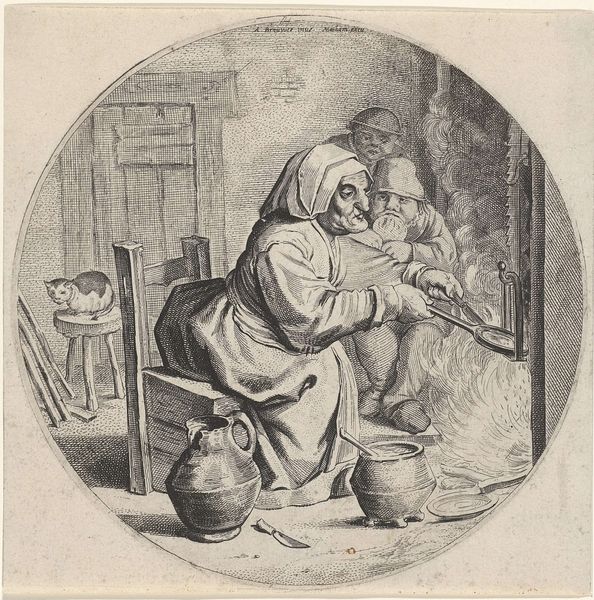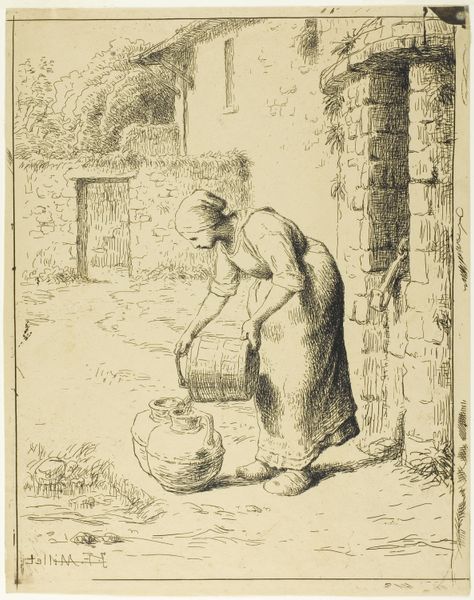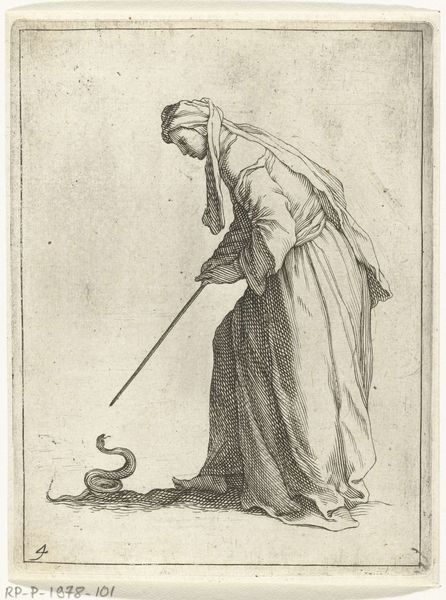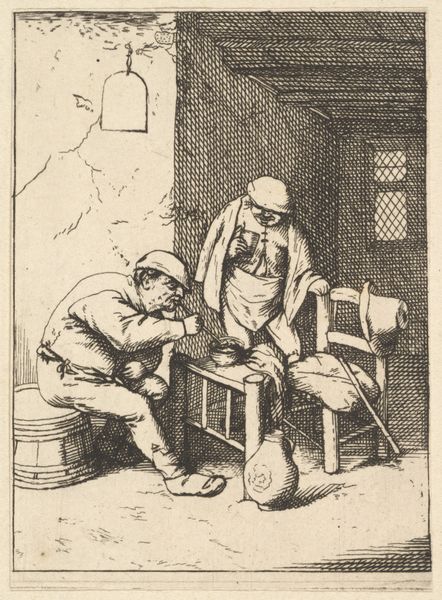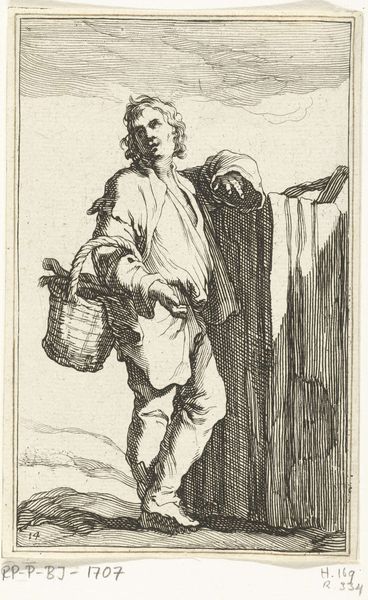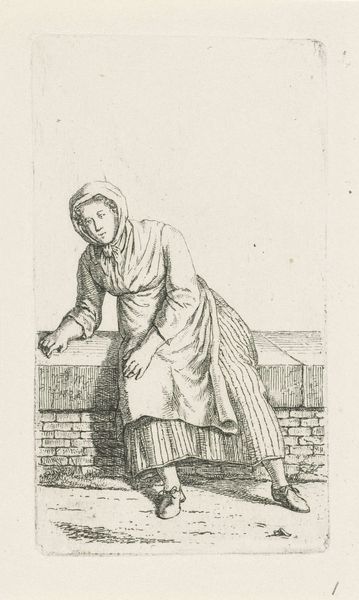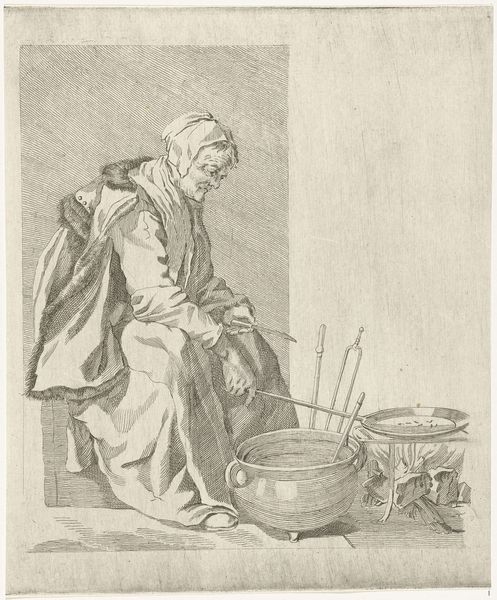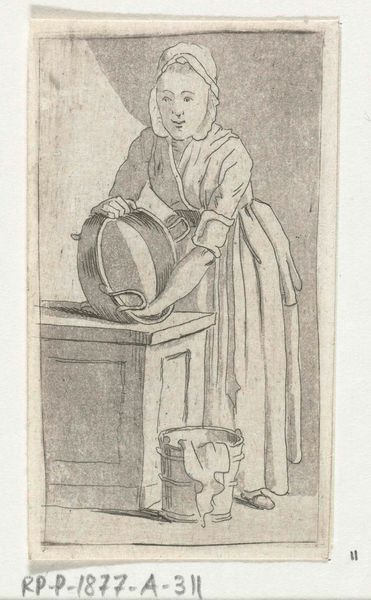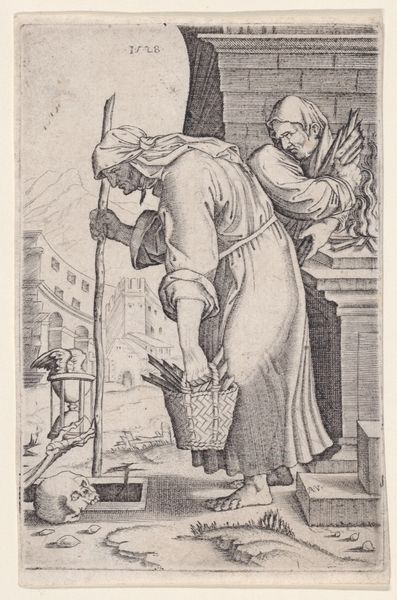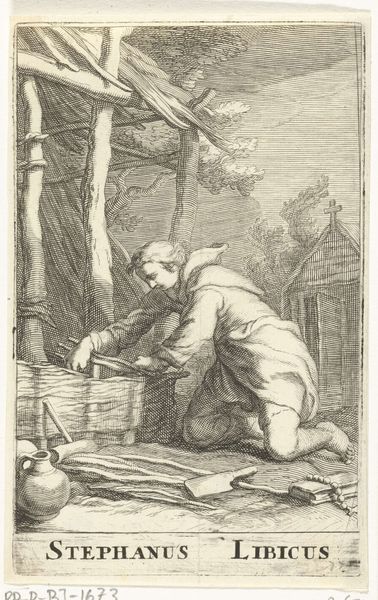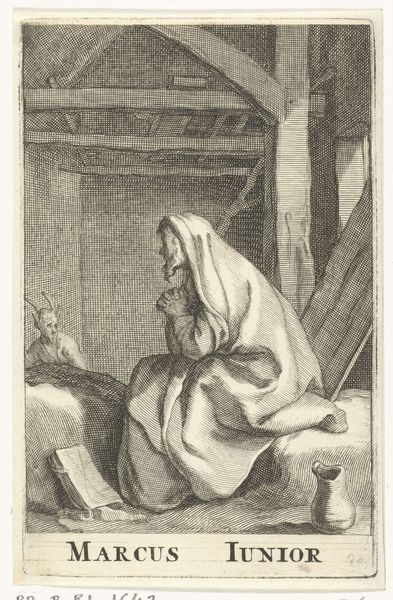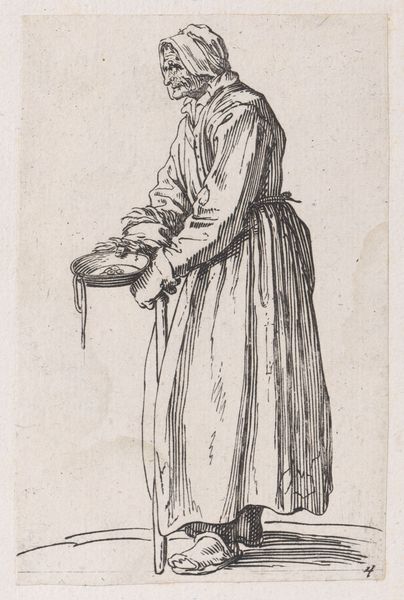
Dimensions: width 97 mm, height 66 mm
Copyright: Rijks Museum: Open Domain
Curator: What a fascinating print! This is "Boenende vrouw," or "Scrubbing Woman," made between 1777 and 1779 by Pieter de Mare. It's currently held at the Rijksmuseum. Editor: Immediately, I'm struck by the sheer labour depicted. The hunched figure, the roughness of the lines suggesting rough cloth, everything about this conveys toil and perhaps weariness. Curator: Exactly. It's created using etching, pen and printmaking techniques. What I find particularly compelling is the way De Mare elevates a mundane domestic task into a subject worthy of artistic attention. Considering the baroque realism on display, his choice to make it accessible as a print suggests an interest in broadening the audience for genre painting beyond the traditional elites. Editor: I'm intrigued by the materiality here. Look at the lines: thick and thin, varying pressures indicating how the tool met the plate, creating texture and depth. You see the physicality of the making. Think of the chemicals involved in the etching process, the labor to make these prints, this wasn’t mass production like we might think of today. Curator: Indeed. And the positioning of this seemingly simple chore within the framework of 18th-century Dutch society. This "genre-painting," touches history and portrays something of everyday life. Cleaning, and especially the cleaning of this particular piece—is elevated and almost…sanctioned. Editor: Right! Also, that single window, barred in its own way, really restricts us. She may well have her headscarf on because that’s what was convenient for her daily routines. Curator: Agreed. The etching, itself a product of skill and labour, captures another sort of labor and highlights their interdependence in shaping the Dutch visual landscape of that era. Editor: Yes, seeing the intersections of work embedded both within the print's process and the image it displays truly adds to my understanding. Curator: It certainly adds layers of interpretation to what at first glance may appear a rather ordinary scene. Editor: Definitely makes me look at how the artistic representation interacts with my perception of mundane labour.
Comments
No comments
Be the first to comment and join the conversation on the ultimate creative platform.
